The Pomeranian is a small toy dog of Pomerania, a region in north-western Poland and north-eastern Germany. Other names for Pomeranians include pom dogs, pom-poms, and Deutscher spitz dogs.
Pomeranians are one of the smallest dog breeds, reaching 7–12 inches tall and weighing 3–7 pounds as adults. With an average lifespan of 12–16 years, these dogs are lively, energetic, bold, independent, loyal.
This breed is compatible with families, couples, and people living alone, and the dogs’ small size makes them good apartment or city dogs.
Pomeranians typically cost $800–$2,000.
TABLE OF CONTENTS
Pomeranian Characteristics & Overview
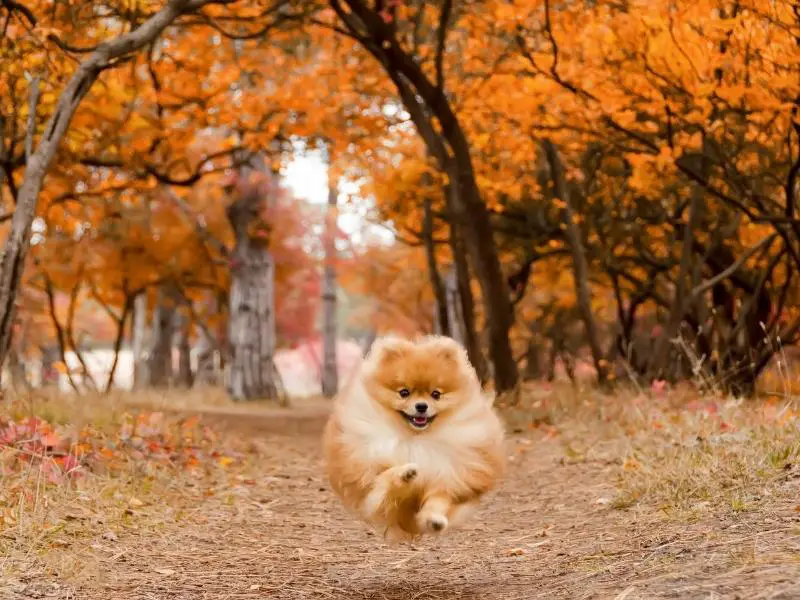
| Common names: | Pomeranian, pom dog, pom-pom, Deutscher spitz dog, zwergspitz, dwarf spitz, Pomeranian spitz dog |
| Origin: | Pomerania in Germany/Poland |
| Breed group: | Toy dog |
| Size: | Small |
| Height: | 7–12 inches |
| Weight: | 3–7 pounds |
| Colors: | White, tan, red, black, gray, orange, cream, brown, blue |
| Coat: | Double coat, medium length |
| Life expectancy: | 12–16 years |
| Temperament: | Lively, playful, loyal, independent |
| Shedding: | Heavy shedders |
| Barking tendency: | High |
| Cost: | $800–$2,000 |
Origin & Purpose
The Pomeranian is the descendant of German spitz-type dogs in the Pomerania region. The breed originally helped fulfill many tasks, including protecting livestock, pulling sleds, and guarding homes.
The earliest record of the breed is from 1762. The dog became famous in the late 1700s when the British Royal Family bought several Pomeranians as pets. The breed was first registered by the American Kennel Club in 1898.
Lifespan
The Pomeranian lives for 12–16 years. Good breeding is essential for a healthy dog to live well beyond 10 years, as these dogs are prone to certain health conditions that are potentially fatal.
Pomeranian Appearance
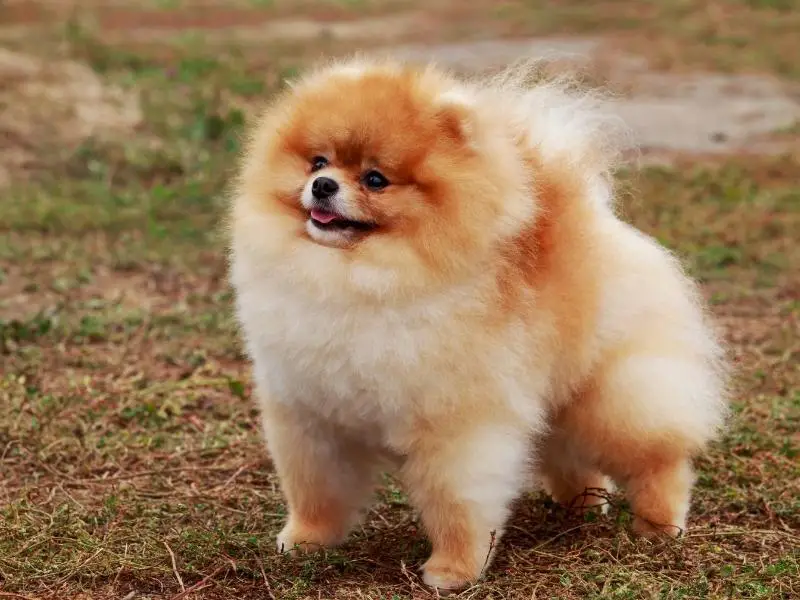
Pomeranians have a tiny body with a thick, plush, double coat in various shades of brown, black, and tan. They also have long tails that are carried over the dogs’ backs.
Height and Weight
Pomeranians are considered small dogs, with a height at the withers of 7–12 inches, and a weight of 3–7 pounds. The size and weight of the dog depend on the size of the parents.
Originally, this breed was bred to weigh up to 14 pounds. Some of these dogs reach a similar weight today.
Colors
Coat colors are typically sable, white, red, merle, or black. Lavender is the rarest Pomeranian color, while orange is the most common coat color.
Coat
Pomeranians have a thick double coat, with a short, soft undercoat and a long, coarse outer coat.
The breed sheds frequently, especially in the spring and fall shedding seasons. The dogs’ long coats are prone to knotting and tangling without proper care.
Head and Facial Features
The Pomeranian has a short, foxlike muzzle, a dark nose, and a wedge-shaped head with round, beady eyes. The dogs have a ruff of fur around the neck, and carry their heads high.
Personality and Temperament
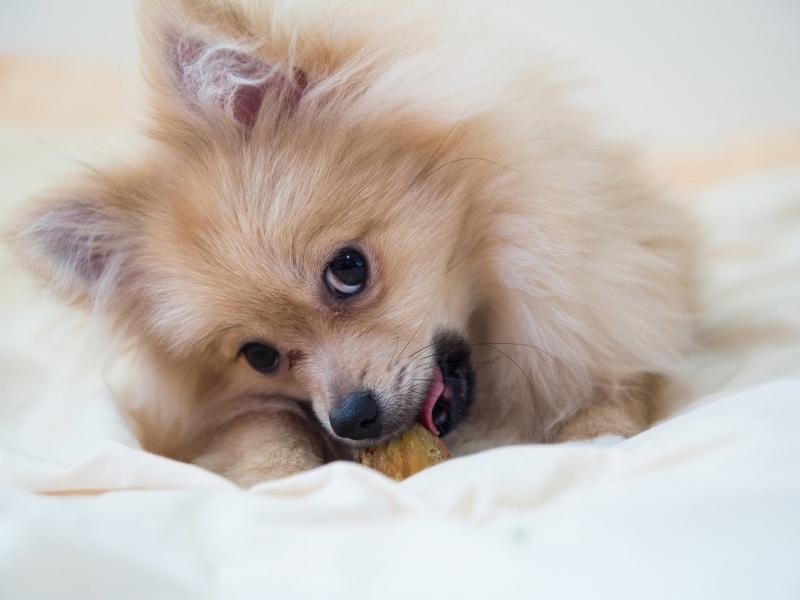
According to the American Kennel Club, the Pomeranian is extroverted, intelligent, lively, and spirited.
The breed’s playful, perky, fun-loving personality makes it a good family pet. Bold and naturally cautious, these dogs tend to bark excessively at strangers if not properly socialized.
Barking
Pomeranians have a reputation for barking a lot. The dogs bark for a number of reasons, including to demand attention, to express excitement, to ward off strangers, and to protect owners. The breed can be trained to remain quiet in situations where barking isn’t appropriate.
Pomeranian Care
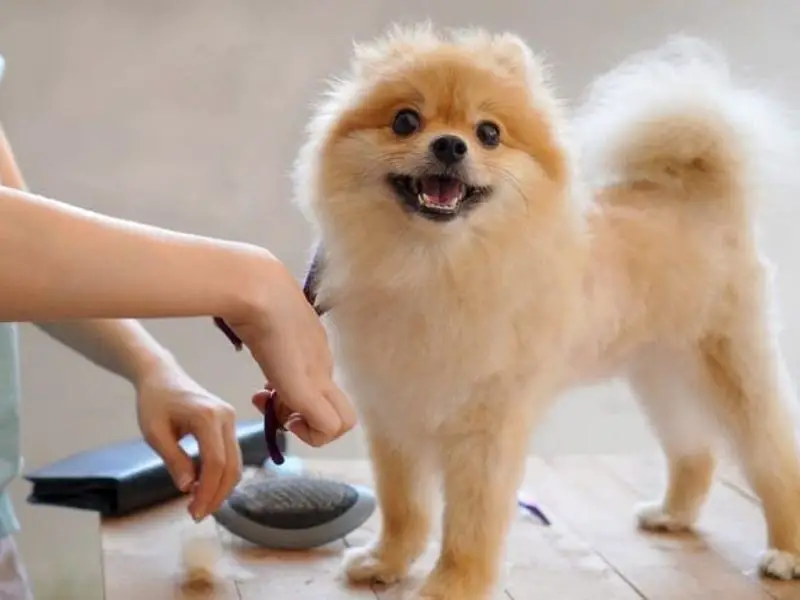
Pomeranians have moderate care needs. The dogs are generally healthy and don’t have big appetites, but the breed requires lots of grooming, and some are difficult to train.
Food Needs
Pomeranians need between ¼ cup and 1 cup of quality dry dog food per day, divided into three meals.
When selecting the best dog food for Pomeranians, consider factors such as the dog’s activity level, metabolism, age, and weight.
Highly active, young dogs need more food than sedentary, older dogs. Puppies need more daily food than adults — usually between 1 ¼ and 2 cups — to support growth.
Grooming Needs
Pomeranians have high grooming needs, requiring daily brushing to keep coats clean and tangle-free. During shedding season, they may need brushing twice per day.
Additionally, these dogs should receive professional grooming — including bathing, ear cleaning, and nail trimming — once every six weeks.
Exercise Needs
Pomeranians are small but lively dogs that have lots of energy to burn. Provide 30 minutes of exercise per day, split into two walks.
Because of its small size, a dog of this breed can be kept as an apartment or city dog, as long as there’s a local park or green space.
Mental Needs
Pomeranians are playful, intelligent dogs that need at least 30 minutes of mental stimulation per day. The breed is needy, eager to please, and enjoys bonding with its owners during playtime.
Good toys for this breed include toys with different shapes and textures, chew toys, and interactive toys with sound effects. These dogs are prone to social anxiety, and aren’t suited to families who are often away from home.
Common Health Concerns
Pomeranians are prone to several common health issues such as:
- Tracheal Collapse: A chronic disease affecting the dog’s windpipe, causing coughing and breathing conditions. Surgery and medication are common treatments for tracheal collapse.
- Eye Conditions: Common conditions affecting vision such as, cataracts and distichiasis are usually only treatable with surgery.
- Hypothyroidism: An underactive thyroid condition that causes lethargy and weight gain. Hormone medication is the most common treatment for hypothyroidism. This condition is less common in toy dogs than medium or large dogs, but Pomeranians are still affected.
- Patellar Luxation: A common small-dog condition that causes the kneecap to slip out of place. Dogs with patellar luxation may have difficulty bearing weight on their affected legs, and may skip or shake their legs to snap the patella back into place. Patellar luxation is treated with exercise therapy and surgical repair.
To reduce the risk of these health conditions in your dog, buy from a reputable breeder who checks the health of both parents and pups, and feed the dog a nutritious, healthy diet.
Training
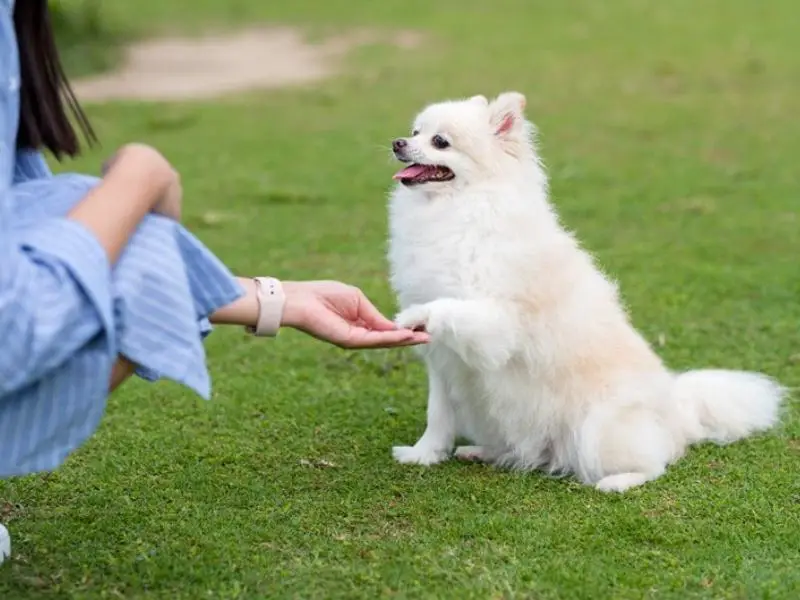
Pomeranians are intelligent but stubborn dogs and some are challenging to train, especially for first-time dog owners. The best way to encourage good behaviors is to train the dog from eight weeks old with a firm, consistent approach.
During the first 16 weeks of the breed’s life, the dog should be socialized with strangers and introduced to different experiences to reduce the likelihood of anxious behaviors and barking.
Begin by leash-training and toilet training the Pomeranian, and teaching the dog basic commands like “sit” and “quiet.” Use quick, reward-based training sessions, with plenty of praise and treats, to keep the dog motivated.
Pomeranian Price
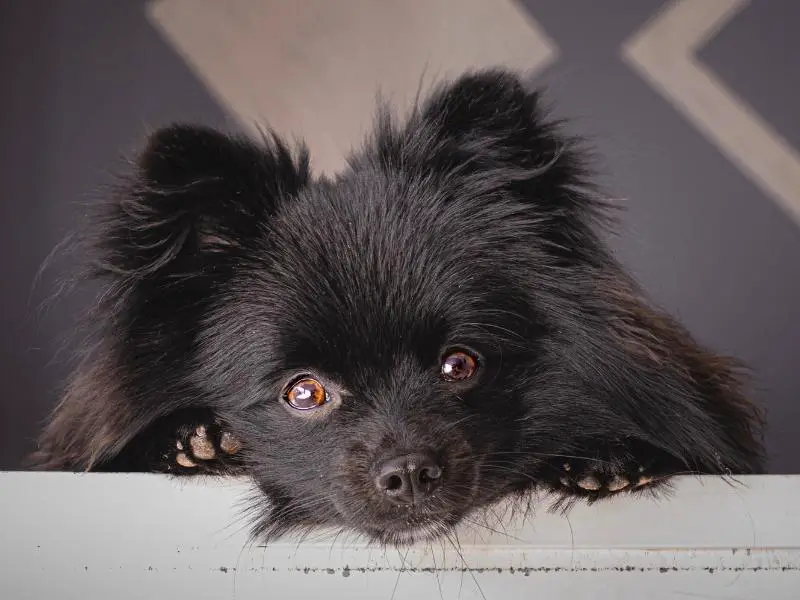
Pomeranians are on the high end of the price scale. Adopting these dogs is cheaper than buying, but they are rarely available for adoption.
How Much is a Pomeranian?
A Pomeranian typically costs $800–$2,000. The price of the dog depends on factors including the dog’s age — puppies are up to twice the price of adults — and the dog’s health status, bloodline, and appearance.
Pedigree dogs cost upwards of $1,500. Adoption fees are about $200.
How Much Does it Cost to Own a Pomeranian?
Raising a Pomeranian costs $700–$1000 per month. Monthly costs include food, grooming, new toys, walking supplies, and healthcare. Grooming is the biggest cost of owning one of these dogs because they require professional grooming regularly.
Additional costs, like dog sitting and professional training classes, add $15–$40 to the monthly expenses.
Is a Pomeranian Right for You?

Pomeranians are playful, loving dogs that are fiercely loyal to their owners. However, these dogs aren’t suitable for some people or lifestyles.
Who Should Get A Pomeranian?
Pomeranians are suitable for households of all sizes, including apartments, due to this breed’s small size. These dogs are affectionate and provide emotional support, so they’re good companion dogs for couples or people living alone.
Because of the breed’s alert personality, loyalty to its owner, and wariness of strangers, Pomeranians make good watchdogs. With the right early socialization, they get along well with other dogs and children.
Who Shouldn’t Get A Pomeranian?
Pomeranians aren’t suitable dogs for families with small children or children who can’t respect delicate, small dog breeds. These dogs have a bold and independent nature, so they’re not ideal for first-time dog owners and people who don’t have the time and patience to train their dogs.
Because these dogs are prone to separation anxiety, they shouldn’t live with people who spend most of the day away from home. People with a low budget shouldn’t buy this breed because the cost of grooming, food, and healthcare is higher than for other dogs.
Pomeranian Mixes
Pomeranians have been crossbred to create some lively, unique hybrids. If you like Pomeranians but are considering other breeds, you might be interested in the following mixes:





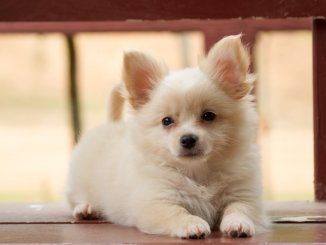
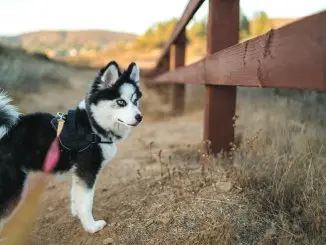
Be the first to comment